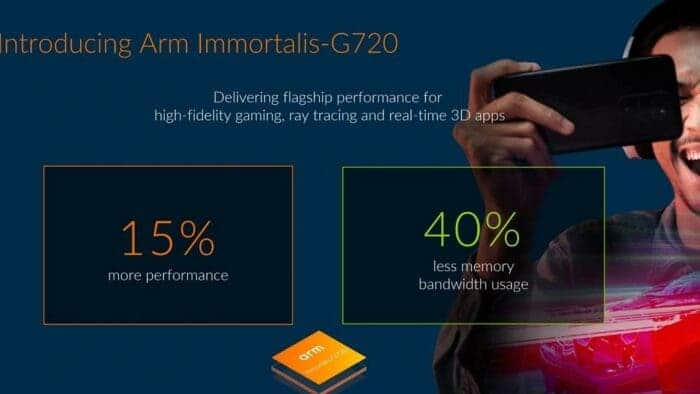sArm has announced its new 5th Generation GPUs, which include the Immortalis G720, Mali G720, and Mali G620. These GPUs are designed to provide a significant performance boost over their predecessors, with the Immortalis G720 being the best GPU from Arm yet. The announcement was made alongside Arm’s new Total Compute Solution for 2023 in the form of the Cortex-X4, A720, and A520.
What is the difference between Immortalis and Mali GPU?
Among the three GPUs announced, Immortalis-G720 and Mali-G720 share the same name. This can create a bit of confusion among readers, so let’s see what are the difference between Immortalis and Mali GPU.
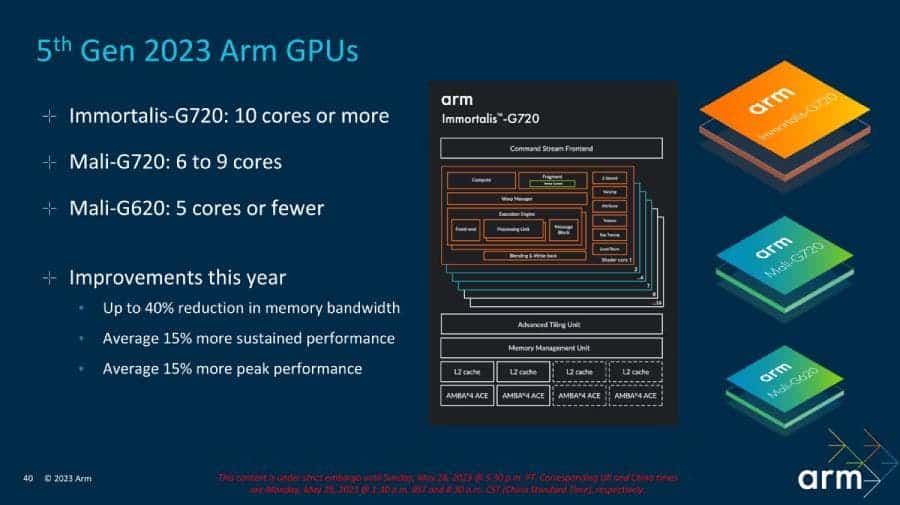
The main difference between Immortalis and Mali is that the former must have a ray tracing unit. For starters, ray tracing is a technique that simulates the way light bounces off objects in a scene and can be used to create more realistic and immersive graphics. On the other hand, Mali-branded GPUs can but are not required to have ray tracing.
The Immortalis also has more cores than the Mali. This means that it can process more graphics operations in parallel, which can lead to better performance. The Immortalis-G720 is the most powerful GPU, with up to 16 cores and support for hardware-based ray tracing. The Mali-G720 is a mid-range GPU that can have between six and nine cores. And the Mali-G620 is only limited to five cores.
Arm Immortalis G720
The Immortalis G720 is Arm’s most powerful GPU to date. It features a revolutionary new technology called Deferred Vertex Shader (DVS), which reduces memory access and bandwidth consumption, resulting in significant power savings and increased frame rates.
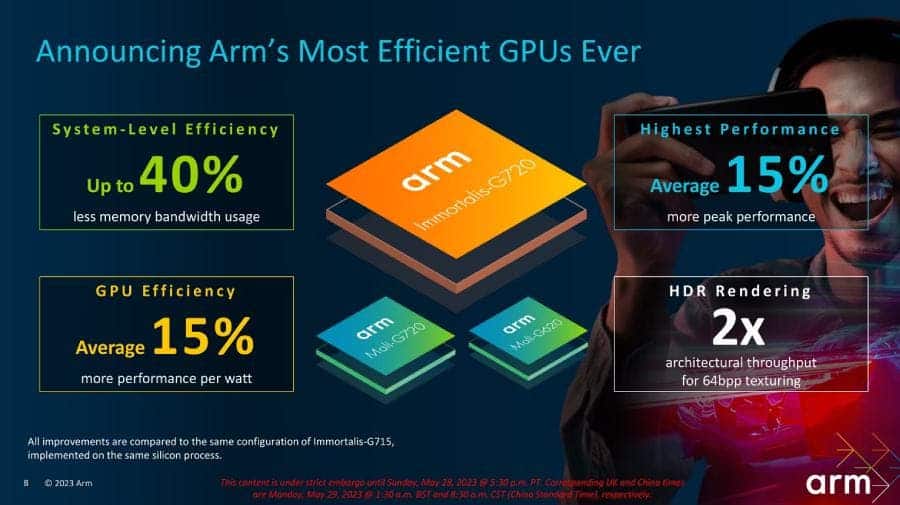
Arm estimates that DVS can reduce bandwidth usage by up to 40%. This is a major improvement, as memory access is a major source of power consumption in high performance gaming. As a result, the Immortalis G720 delivers a 15% improvement in performance per watt, a similar percentage increase in peak performance, and an average 15% boost in frame rate over its predecessor, the Immortalis G715.
In real-world terms, Arm’s measurements show that the Immortalis G720 is capable of delivering up to 20% better performance than the Immortalis G715. This is mainly due to the bandwidth savings achieved through the use of DVS.
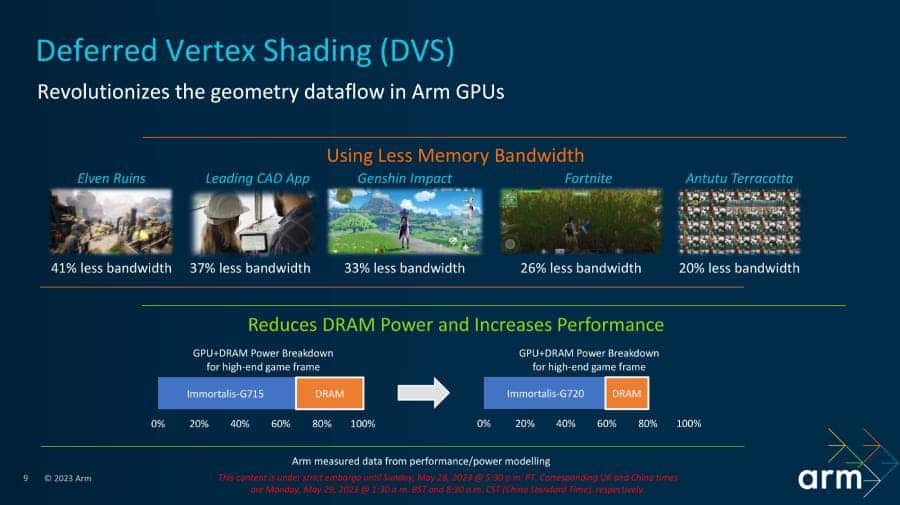
The Immortalis G720 GPU’s bandwidth savings allow for the addition of PC level effects such as real time dynamic lighting, blooming, depth of field, and screen space ambient occlusion. In fact, Arm has also announced that Unreal Engine 5‘s desktop renderer will make its way to Android later this year.
In addition to DVS, the Immortalis G720 also supports hardware level ray tracing, variable rate shading, and 2x MSAA modules. These features ensure seamless adaptability to diverse gaming scenarios and deliver enhanced realism, smoother gameplay, and extended battery life.
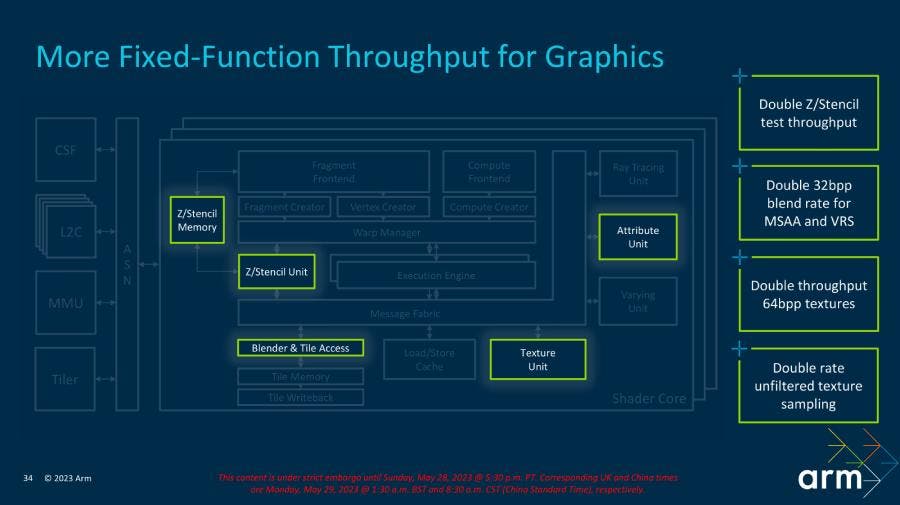
In addition to the major enhancements, Arm also made some smaller changes to the GPU. The command stream front end (CSF) was given more working registers for streaming processing. Other units across the board also saw improvements in their throughput. The CSF handles scheduling and draws calls with its own computational abilities.
Mali-G720 and Mali-G620
Other than Immortalis-G720, Arm also announced two new GPUs today: the Mali-G720 and Mali-G620. These GPUs are designed to bring “premium GPU capabilities and features to a wider market.” They are likely to be used in affordable flagship smartphones. However, we will have to wait and see which companies choose to use these GPUs in their SoC.
Final Words
Alongside the new GPUs, Arm also announced its flagship Cortex-X4 CPU core. The company did not reveal which phones or chip makers will use the new CPU and GPU. But it is likely that Qualcomm will use it in its next generation Snapdragon 8 Gen chip. We can expect to learn more about Qualcomm’s upcoming mobile processor later this year.

